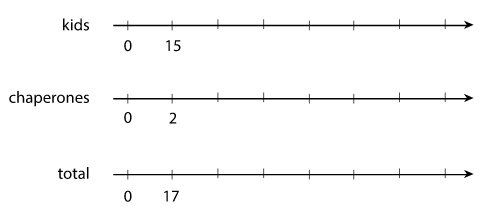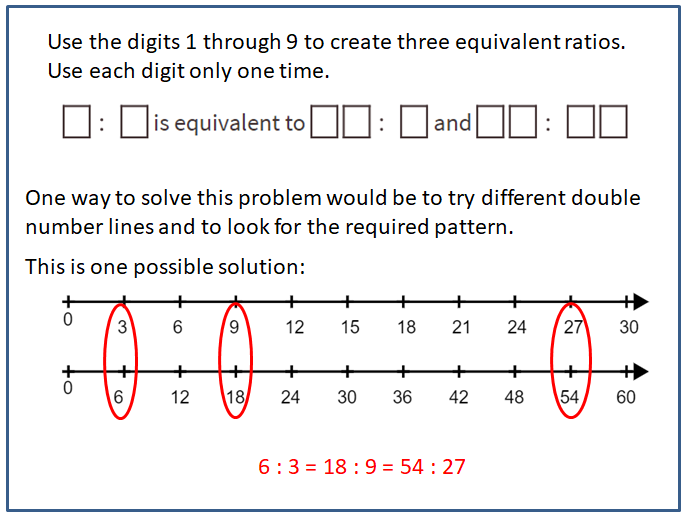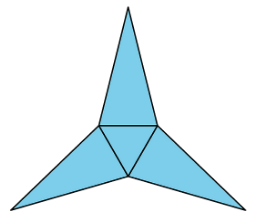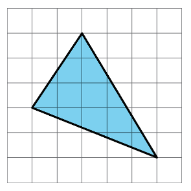Illustrative Mathematics Unit 6.2, Lesson 16: Solving More Ratio Problems
Learning Targets:
- I can choose and create diagrams to help think through my solution.
- I can solve all kinds of problems about equivalent ratios.
- I can use diagrams to help someone else understand why my solution makes sense.
Related Pages
Illustrative Math
Grade 6
Lesson 16: Solving More Ratio Problems
Let’s compare all our strategies for solving ratio problems: tape diagrams, tables, and double number lines.
Illustrative Math Unit 6.2, Lesson 16 (printable worksheets)
Lesson 16 Summary
When solving a problem involving equivalent ratios, it is often helpful to use a diagram. Any diagram is fine as long as it correctly shows the mathematics and you can explain it.
The following diagram shows three different ways to solve ratio problems: tape diagrams, tables and double number lines.
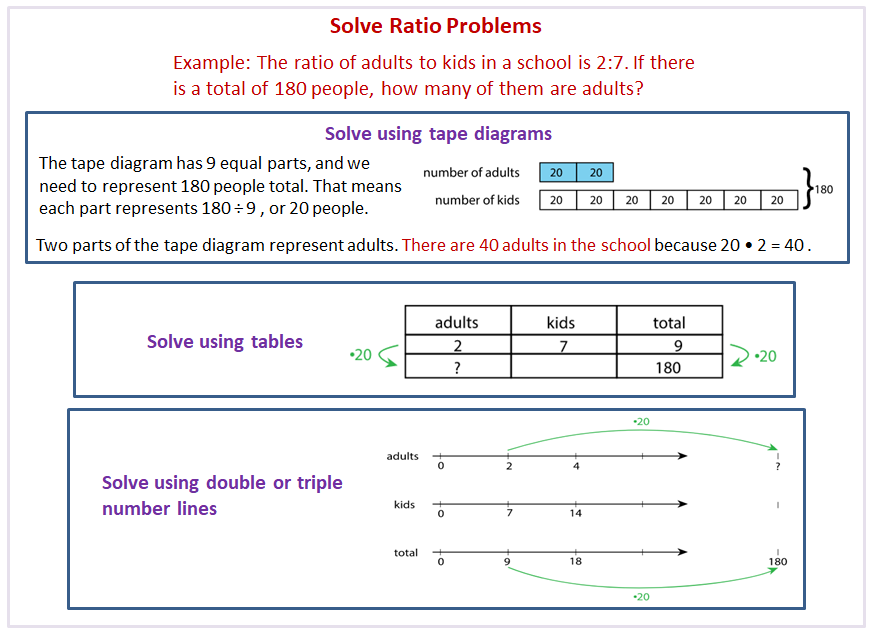
Another reason to make diagrams is to communicate our thinking to others. Here are some good habits when making diagrams:
- Label each part of the diagram with what it represents.
- Label important amounts.
- Make sure you read what the question is asking and answer it.
- Make sure you make the answer easy to find.
- Include units in your answer. For example, write “4 cups” instead of just “4.”
- Double check that your ratio language is correct and matches your diagram.
16.1 You Tell the Story
Describe a situation with two quantities that this tape diagram could represent.
Scroll down the page for the solution to the three equivalent ratios problem.
16.2 - A Trip to the Aquarium
Consider the problem: A teacher is planning a class trip to the aquarium. The aquarium requires 2 chaperones for every 15 students. The teacher plans accordingly and orders a total of 85 tickets. How many tickets are for chaperones, and how many are for students?
- Solve this problem in one of three ways:
a. Use a triple number line.
b. Use a table. (Fill rows as needed.)
| kids | chaperones | total |
| 15 | 2 | 17 |
After your class discusses all three strategies, which do you prefer for this problem and why?
Are you ready for more?
Use the digits 1 through 9 to create three equivalent ratios. Use each digit only one time.

16.3 - Salad Dressing and Moving Boxes
Solve each problem, and show your thinking. Organize it so it can be followed by others. If you get stuck, consider drawing a double number line, table, or tape diagram.
- A recipe for salad dressing calls for 4 parts oil for every 3 parts vinegar. How much oil should you use to make a total of 28 teaspoons of dressing?
- Andre and Han are moving boxes. Andre can move 4 boxes every half hour. Han can move 5 boxes every half hour. How long will it take Andre and Han to move all 72 boxes?
Lesson 16 Practice Problems
- Describe a situation that could be represented with this tape diagram.
- There are some nickels, dimes, and quarters in a large piggy bank. For every 2 nickels there are 3 dimes. For every 2 dimes there are 5 quarters. There are 500 coins total.
a. How many nickels, dimes, and quarters are in the piggy bank? Explain your reasoning.
b. How much are the coins in the piggy bank worth? - Two horses start a race at the same time. Horse A gallops at a steady rate of 32 feet per second and Horse B gallops at a steady rate of 28 feet per second. After 5 seconds, how much farther will Horse A have traveled? Explain or show your reasoning.
- Andre paid $13 for 3 books. Diego bought 12 books priced at the same rate. How much did Diego pay for the 12 books? Explain your reasoning.
- Which polyhedron can be assembled from this net?
A. A triangular pyramid
B. A trapezoidal prism
C. A rectangular pyramid
D. A triangular prism - Find the area of the triangle. Show your reasoning. If you get stuck, consider drawing a rectangle around the triangle.
The Open Up Resources math curriculum is free to download from the Open Up Resources website and is also available from Illustrative Mathematics.
Try out our new and fun Fraction Concoction Game.
Add and subtract fractions to make exciting fraction concoctions following a recipe. There are four levels of difficulty: Easy, medium, hard and insane. Practice the basics of fraction addition and subtraction or challenge yourself with the insane level.

We welcome your feedback, comments and questions about this site or page. Please submit your feedback or enquiries via our Feedback page.

